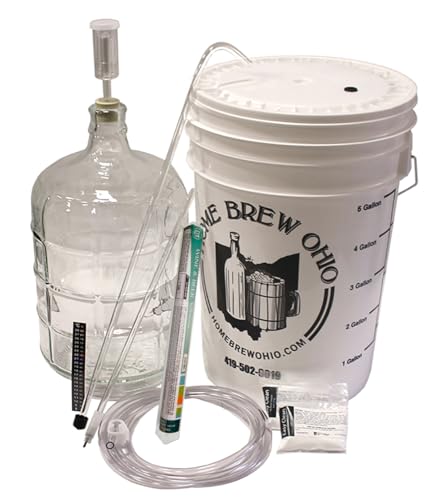So I am on my third box wine kit.
The first - a very cheap Sauvignon Blanc can't out wonderful, I like it better than what I can buy in the shops. The second a zinfandel rose is ok. To me it has a bit of a yeasty smell but it tastes ok. The third a pinot blush smells ok but has a chemical aftertaste. Again it's perfectly clear but this one isn't fizzy at all.
All have definitely finished fermenting according to the hydrometer.
Q1. Will the yeast smell go away with aging. The wine is perfectly clear if a little fizzy but reads 998
Q2. The Pinot only came with one finings and no flavour add back. I'm not sure I stirred it as vigorously as the first one either and it took 48 hours to clear after stirring all the others were clear within 24 the rest had two finings in the kit would this possibly cause the chemical taste if the other liquid (I can never remember what it's called but it went in after the first finings and before the second finings in the other two packs? I think there's a pleasant wine if I can get rid of the chemical taste.
I have used the same everything kit wise for all the wines, sterilised everything exactly the same way.
Thank you for any input
The first - a very cheap Sauvignon Blanc can't out wonderful, I like it better than what I can buy in the shops. The second a zinfandel rose is ok. To me it has a bit of a yeasty smell but it tastes ok. The third a pinot blush smells ok but has a chemical aftertaste. Again it's perfectly clear but this one isn't fizzy at all.
All have definitely finished fermenting according to the hydrometer.
Q1. Will the yeast smell go away with aging. The wine is perfectly clear if a little fizzy but reads 998
Q2. The Pinot only came with one finings and no flavour add back. I'm not sure I stirred it as vigorously as the first one either and it took 48 hours to clear after stirring all the others were clear within 24 the rest had two finings in the kit would this possibly cause the chemical taste if the other liquid (I can never remember what it's called but it went in after the first finings and before the second finings in the other two packs? I think there's a pleasant wine if I can get rid of the chemical taste.
I have used the same everything kit wise for all the wines, sterilised everything exactly the same way.
Thank you for any input



















































